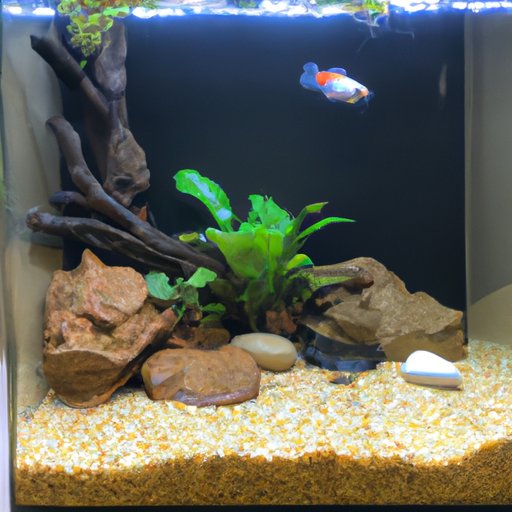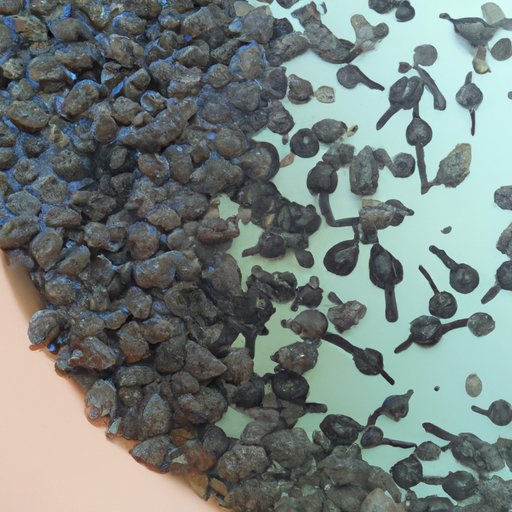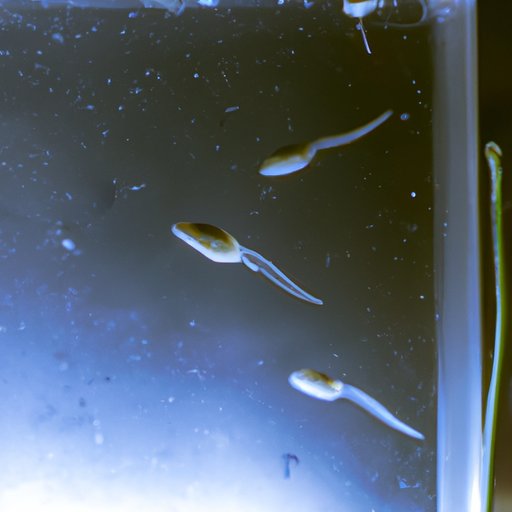Introduction
Tadpoles are the juvenile stage of frogs and toads. They usually hatch from eggs laid in water and spend the first part of their lives as aquatic creatures. Taking care of tadpoles at home can be an enjoyable experience for children and adults alike, but it does require some knowledge and planning to ensure that your tadpoles stay healthy and happy.

Establish a Clean Aquarium Environment
The first step in taking care of tadpoles is to establish a clean aquarium environment. Start by thoroughly cleaning the tank with warm water and mild detergent. Rinse the tank several times to make sure all traces of soap are gone. Next, set up the filter according to the manufacturer’s instructions. The filter will help keep the water clean and free of debris.
Once the tank is ready, you can begin to fill it with water. Tap water should be treated with a conditioner to make it safe for the tadpoles. Make sure the water is at the correct temperature before adding the tadpoles. Test the water quality with a kit to make sure it is suitable for the tadpoles. If the water is not at the correct pH level or contains too much ammonia, nitrite, or nitrate, you may need to adjust the water before adding the tadpoles.

Provide Proper Temperature and Lighting
Tadpoles are cold-blooded creatures, so they need a source of warmth to stay healthy. A good rule of thumb is to keep the water temperature between 70 and 75 degrees Fahrenheit. You can use an aquarium heater to maintain the desired temperature. Keep an eye on the temperature, as fluctuations can cause stress to the tadpoles.
In addition to heat, tadpoles also need light. Natural sunlight is best, but you can also use artificial lights. Choose full-spectrum bulbs that emit both UVA and UVB rays, as these are beneficial for the health of the tadpoles. Place the lights 12 to 14 hours per day, with 8 to 10 hours of darkness each night.

Feed Tadpoles the Right Foods
Tadpoles are omnivores, so they will eat both meat and plants. Live foods such as bloodworms, mosquito larvae, and brine shrimp are great sources of protein. You can also feed them pellet foods designed specifically for tadpoles. In addition, vegetables such as spinach, zucchini, and lettuce provide essential vitamins and minerals.
Monitor Water Quality
It is important to regularly check the water quality in your tadpole tank. Test the pH levels to make sure they are within the acceptable range (6.5 to 7.5). Also check the levels of ammonia, nitrite, and nitrate. High levels of any of these substances can be harmful to the tadpoles.
Introduce New Tadpoles Carefully
If you plan to add more tadpoles to your tank, be sure to introduce them carefully. Place the new tadpoles in a separate container and monitor them for signs of illness. If the new tadpoles appear healthy, you can move them to the main tank with a quarantine process. This involves slowly acclimating the new tadpoles to the water in the main tank over a period of several days.
Create a Safe Environment for Tadpole Transformation
As the tadpoles grow, they will eventually go through the process of metamorphosis, where they transform into adult frogs or toads. To ensure a successful transformation, create a safe environment for the tadpoles. Provide hiding places such as rocks and floating plants, and remove any predatory fish from the tank. Monitor the tadpoles closely during this time and provide the necessary nutrients to support their growth.
Conclusion
Taking care of tadpoles at home is a rewarding experience. With the right knowledge and preparation, you can create a safe and healthy environment for your tadpoles. Start by establishing a clean aquarium environment, providing proper temperature and lighting, feeding the right foods, monitoring water quality, introducing new tadpoles carefully, and creating a safe environment for transformation.
(Note: Is this article not meeting your expectations? Do you have knowledge or insights to share? Unlock new opportunities and expand your reach by joining our authors team. Click Registration to join us and share your expertise with our readers.)
